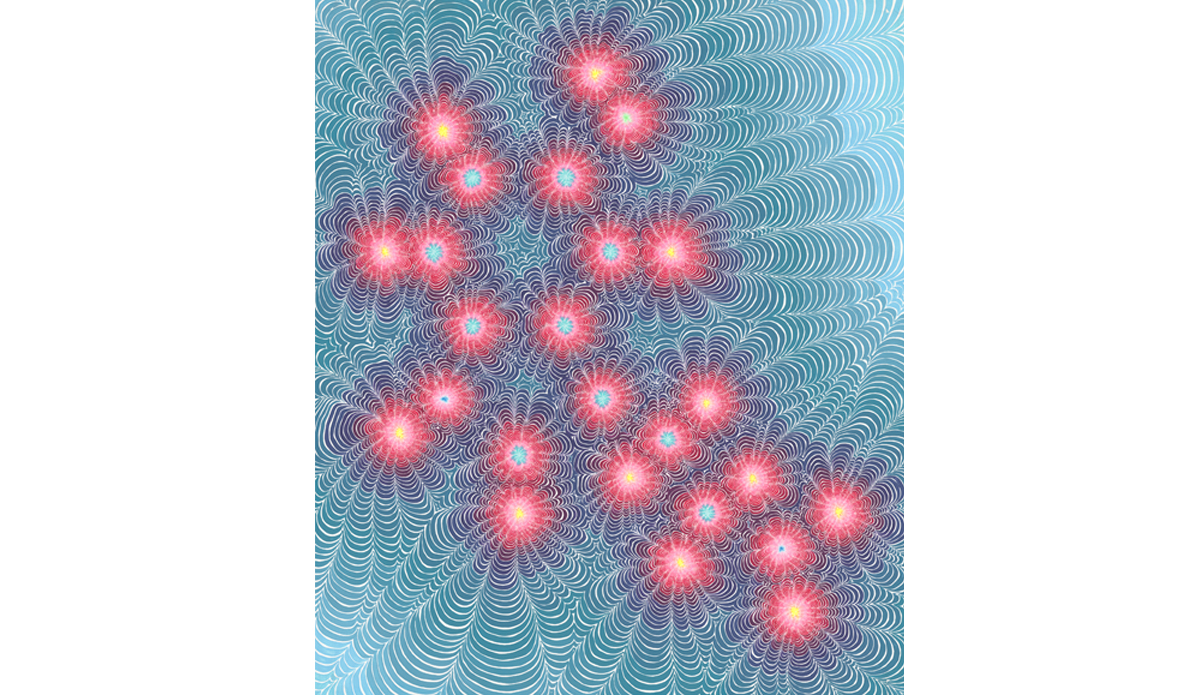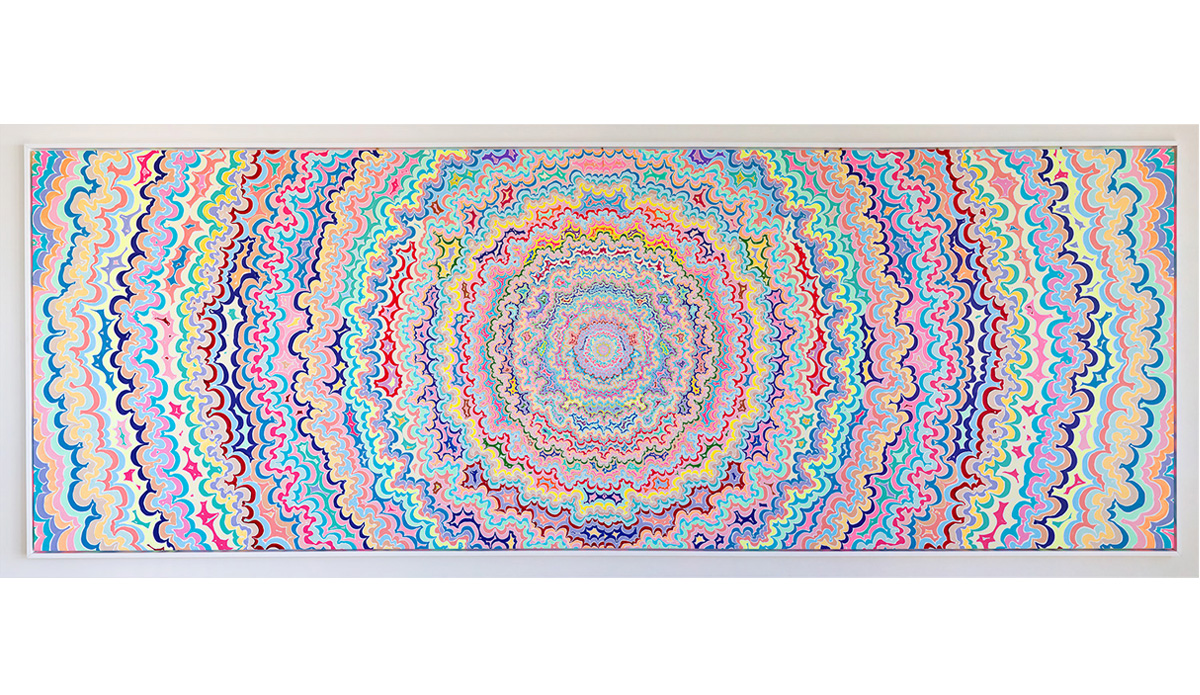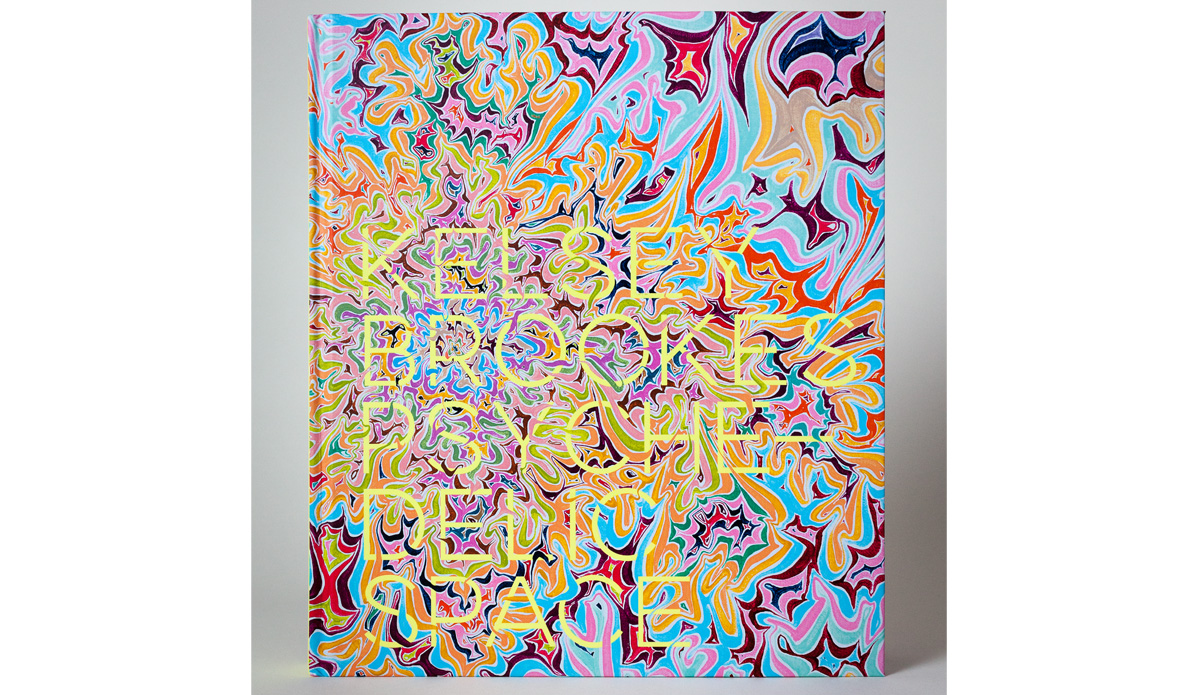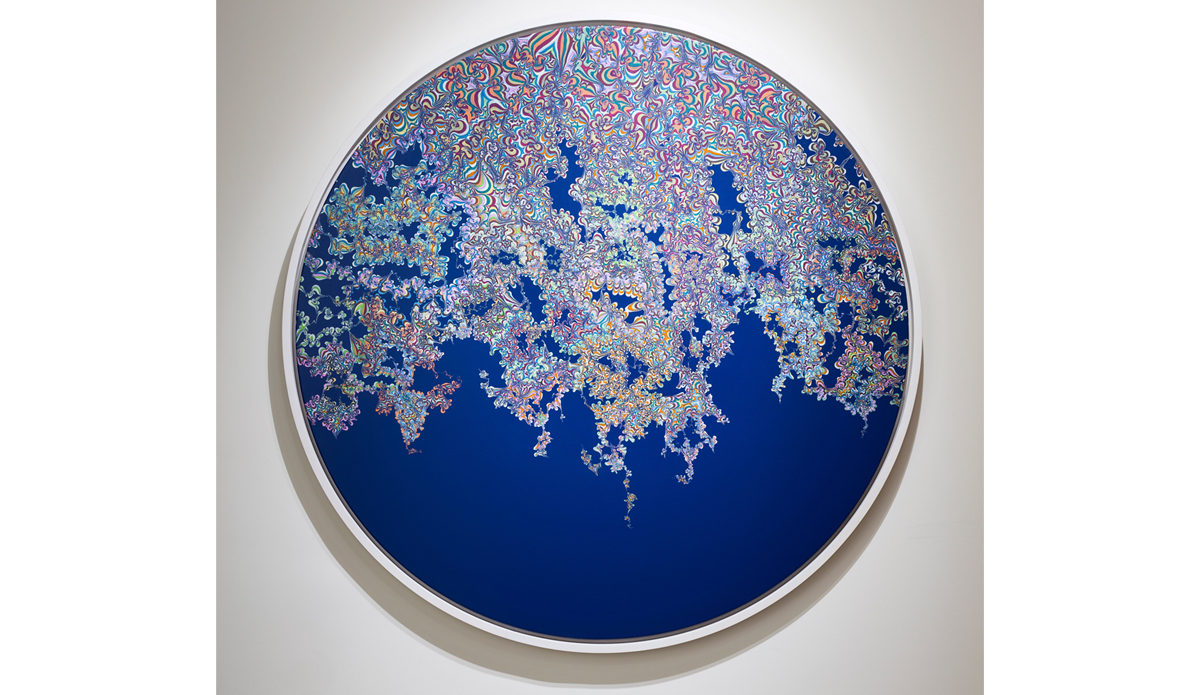Kelsey Brookes is driving. And he’s excited. He just saw a Tesla, which to him, is “so fucking cool! On the freeway? Damn!” That’s how a lot of things are for Kelsey. He’s happier and filled with more childlike enthusiasm than most humans, who in comparison seem cold and numb to the minute peculiarities of everyday life.
A steady job, stability – Kelsey had those things once, though the life force wasn’t sucked out of him as it often is with other nine-to-fivers. He was a scientist. A serious one, too. Dressed in a lab coat and searching for a cure for HIV and other viruses. But Kelsey’s also a creator and a free spirit, one that’s averse to restraints like routine and a clean-shaven face. So he quit his job and hit the road across Australia where he found music, surfing, and art.
Kelsey’s most recent show, titled Psychedelic Space, debuted at La Jolla Quint Gallery and also as a coffee table book. It features visual imaginings of molecular substances like serotonin, dopamine, and LSD. Sort of like synesthesia – you’re seeing the physical molecule but also feeling what it’s like to have it inside your brain.
We caught up with Kelsey to talk about the work, surfing, meditation and fucking Teslas driving on the freeway!
You started off as a scientist…what drew you to that and what did you do?
All human beings are asking questions and looking for answers. That’s how my mind works. And science was a way for me to do that. It’s using the scientific method to sequester your intuitive thoughts and just allow you to see the world how it really is. I think I’m still trying to do that [through art].
The area of science I ended up in was microbiology. I ended up studying a virus called West Nile encephalitis, which at the time in 2002, was brand new. Then I worked at a biotech company in San Diego looking for new ways to find HIV in human blood. It took four years. But we got it done and once we did, I left.
So what made you leave that field and explore art?
I went to Australia for a bit and just drove around. I did all the things I wanted to do but never could because of school or work. I read a bunch of literature. I tried to play music. And I drew. I drew every night religiously. I took all the shit that was in my pockets and I just drew it. When you put effort into something, you get better at it. I’m not saying I was great at it, but I was ok. I think everyone can get ok at something just by putting the effort into it. I decided to follow that and see how far I could push it…I guess I’m still on that experiment now.
Your latest work is a shift from more figurative work to abstract. What brought that about?
What I’m doing now is still figures but they’re below the level of human eye detection. They’re atomic scale figures. But when I started I was doing like Art 101, like classical shit. It was getting annoying. So I started doing this abstract work to take a break from what I was doing. I was doing these repetitive circles and then it popped in my head that I should just draw molecules. And that was great! It was fun. It was fresh. It was new. I don’t think anyone was doing that. No one else was doing it. I was in my own territory with open prairie. I was like, “fuck it, I’m gonna run with this for a bit.”
So after you plot the points of the molecular line diagram, do you roam free? Do you go for a subconscious, Jackson Pollock or Cy Twombly approach? Or do you have a plan?
I use the two-dimensional rendering of that molecule and then I start painting from each of those center points. The idea is to create something that is aesthetically pleasing, fun to look at and all that. But it also has some deeper concept pulling it all together.
I always felt that the best art worked on multiple levels. It has a good, deep concept that makes a lot of sense but it also has an aesthetic beauty. Like a poetry to it, that wasn’t necessary tangible or conceptual, but more intuitive.
So it’s part Jackson Pollock, but that’s only after the concept has been worked out thoroughly. If I go too far in one direction or the other, it’s not going to work out.
Are you a perfectionist?
I need to have fuck ups. That’s where most of my work comes from. Like I’ll fuck something up and I’ll be like, “that’s interesting! Lemme pursue that for a bit!” That is how everything has worked out in my entire artistic career. I always tell myself to allow things to get fucked up, because it’s the only way you’re going to learn from it. If you allow the fuck ups to happen, that’s how you’re gonna get somewhere new.
Where does consciousness and spirituality and philosophy factor into your work?
Meditation was something that I came to when I was 30. I’m 37 now. It just seemed like something that was interesting to me. It was always interesting to me but in like a romantic way. I thought that if I closed my eyes and followed my breath, the secrets of the world would come pouring out on top of me. Like I would be in this ecstatic ecstasy of knowledge. I didn’t know what the fuck I was thinking. I was such an idiot.
But I started pursuing it more and more and it became really fulfilling. It was something that I felt like I could pursue alongside surfing and art and my family life. It would sort of augment those. And it was hard and I found that fun. It’s just like surfing…it’s fucking hard but it gives you just enough to tick, like there might be something here. But it’s really hard. Holy shit.
Anybody who surfs understands that. Surfing is one of the most difficult fucking things in the world. It takes you a year before you can really stand up and then 10 years before you have any idea really what to do on a wave. And then it takes another 10 years after that before you can surf a wave in any sort of aesthetically pleasing way.
I spend 45 minutes every morning right when I wake up doing this meditation, trying to focus my mind on one simple thing. I wanted to find a way to bring my meditation into my everyday life. So I thought, “shit, I paint all day…maybe there’s a way I can glue these two things together.” I started doing these drawings where I would draw a line over and over itself. A really simple task. And the trick was for me to keep my mind on that task. The moment I started worrying about the rent or thinking about lunch, I would bring it back. That’s the practice. As I started getting proficient at it, I realized that I was making a visual representation of meditation.
How does surfing connect to your art?
As far as aesthetics go with my art, I want it to feel fluid and functional and pretty. Everything is there for a reason. It’s a well-rounded, well-crafted thing. And I feel that the surfing I’m trying to emulate or that I’m trying to do is along those lines. I’m not trying to do a huge air…I could never fucking do an air anyway. I’m not trying to do the hottest new moves. I’m trying to feel what the wave is doing and I’m trying to do the most simple action to get me through the wave. I guess what I’m most interested in is going fast and getting barreled. I’m always trying to put myself in an aesthetic position where I’m going fast and getting barreled.
You left behind this stable job…do you have any regrets stepping into the wild, spontaneous world of art and surfing?
I regret not being in the lab anymore. There are things about being in a scientific sphere that I will always miss. I think academia is such a wonderful pursuit. It’s a way to view the world in a way that it actually is. So that we can get new things. So that we can get new drugs, new cellphones. I think technology really is the answer to so many problems in the world. Without engineers and scientists the answers to those problems won’t exist. And not being a part of that kind of bums me out. I miss that.
But the pursuit of art is such a fun way to live. And it’s such a free way to live. It comes with its own pressures, though, that’s for sure. Like, it’s on you to make money. But it’s worth it.














